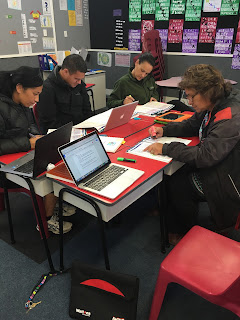Our thoughts ..
Level 3 - From purposes/audiences to Structure: show developing….developing understanding...Level 4 shows an increasing. Understanding…
- Importance of being able to see the difference of developing and increasing.
- Examples: When reading a student at level 3 may refer to images/diagrams to support their reading. Whereas a student level 4 would be referring back to these images/diagrams to increase their understanding of the text eg. Water Bottle Rockets, students would be looking at diagrams or videos together with text to help them understand what they are reading.
- When reading a text/viewing images at level 3 uses their prior knowledge (text to text, text to self, text to world to help make meaning. Whereas Level 4 students are using their knowledge to help understand more complex ideas.







